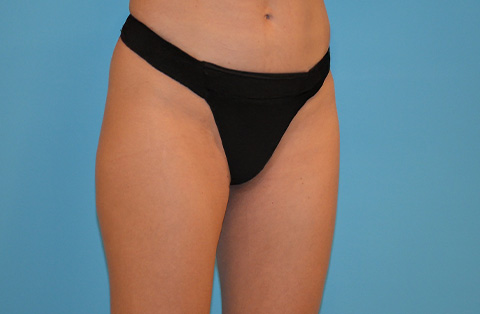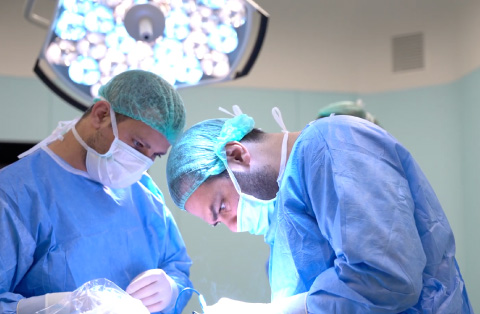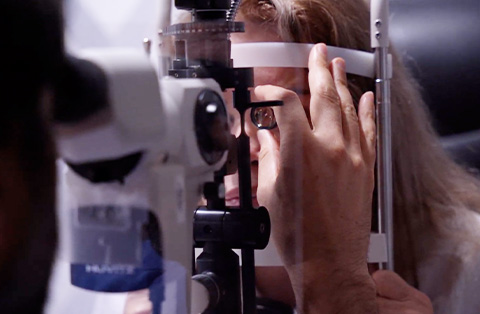Dreaming of smoother, firmer thighs and a lifted buttocks?
A posterior thigh lift could be the solution you've been seeking. This innovative procedure targets sagging skin and excess fat on the back of your thighs and buttocks, providing a more toned and youthful appearance.
Whether you’re curious about the surgery process, recovery timeline, or costs involved, this article will guide you through all the essential details. Discover how a posterior thigh lift can enhance your lower body contours and boost your confidence.
What is a Posterior Thigh Lift?
A posterior thigh lift is a cosmetic surgery that removes excess skin and fat from the back of the thighs and buttocks. This procedure is designed to tighten and contour these areas, resulting in a smoother, firmer appearance.
It is particularly beneficial for individuals who have experienced significant weight loss or have sagging skin due to aging. The plastic surgery not only enhances the overall look of the thighs and buttocks but also improves comfort and mobility by eliminating excess, sagging skin. It is ideal for those seeking a more youthful and toned lower body.
Related Content:
Who is an Ideal Candidate for Posterior Thigh Lift?
If you're troubled by loose, sagging skin on the back of your thighs and buttocks, a posterior thigh lift might be the perfect solution. This procedure can significantly improve the contour and firmness of these areas, giving you a more youthful and toned appearance.
Curious if you're a good fit for this surgery? Here are the characteristics of an ideal candidate:
Individuals with significant sagging skin on the back of the thighs and buttocks.
Those who have lost a substantial amount of weight.
People in good overall health.
Non-smokers or those willing to quit before surgery.
Individuals with a stable weight.
Those with realistic expectations about the outcomes.
People committed to maintaining a healthy lifestyle post-surgery.
Preparing to Surgery and Schedule Your Consultation
Preparing for a the surgery involves several important steps to ensure the best outcomes. From understanding the procedure to planning your recovery, thorough preparation is key. Scheduling a consultation with a board-certified surgeon is the first step toward achieving your desired results. During this consultation, you can address any concerns and get detailed information about the surgery.
Questions to Ask Your Surgeon
What is your experience with posterior thigh lift surgeries?
Am I a good candidate for this procedure?
What are the potential risks and complications?
Can I see before and after photos of previous patients?
What type of anesthesia will be used?
How should I prepare for the surgery?
What is the recovery process like?
How long will the results last?
What are the costs involved, including any additional fees?
What post-operative care will I need?
How can I ensure the best possible results?
What are the possible side effects or complications?
Will I need follow-up appointments?
How soon can I resume normal activities and exercise?
What should I do if I experience any issues during recovery?
How is Posterior Thigh Lift Surgery Performed?
Posterior thigh lift surgery involves several steps to ensure effective tightening and contouring of the back of the thighs and buttocks. Here’s a step-by-step breakdown of the procedure:
Anesthesia
The procedure begins with the administration of anesthesia. General anesthesia is typically used to ensure patient comfort throughout the surgery.
Incision
The surgeon makes an incision along the lower buttocks crease. The length of the incision depends on the amount of skin and fat to be removed.
Liposuction (if needed)
If there is excess fat in the area, the surgeon may perform liposuction. This step helps in contouring the thighs and buttocks for a smoother appearance.
Skin and Tissue Removal
The surgeon removes excess skin and underlying tissue. This step is crucial for tightening the area and achieving the desired contour.
Reshaping and Tightening
The remaining skin is reshaped and pulled tight to create a firmer, more youthful appearance. The surgeon ensures the new contours are smooth and natural-looking.
Closing the Incision
The surgeon carefully closes the incision with sutures. In some cases, temporary drains may be placed to prevent fluid accumulation.
Bandaging and Compression Garments
The treated area is bandaged, and a compression garment is applied. This helps reduce swelling and supports the new contours during the initial healing phase.
Recovery Monitoring
The patient is monitored as they wake up from anesthesia. Post-operative instructions are provided to ensure a smooth recovery process.
By following these steps, a posterior thigh lift effectively removes sagging skin and enhances the overall appearance of the thighs and buttocks, resulting in a more toned and proportional lower body.
Posterior Thigh Lift Recovery Process
Recovering from a posterior thigh lift surgery involves several stages. Understanding the timeline can help you prepare for a smooth and effective recovery. Here’s what to expect:
First Week
Day 1-2: Rest is crucial. Limit movement to reduce swelling and pain. Pain medication and antibiotics are prescribed to manage discomfort and prevent infection.
Day 3-7: Gradually increase light activities as tolerated. Continue wearing compression garments to minimize swelling and support healing.
Weeks 2-3
Week 2: Swelling and bruising should begin to subside. Patients can usually return to non-strenuous activities. Continue following post-operative care instructions, including proper incision care.
Week 3: Gentle walking can help improve circulation. Avoid strenuous activities or heavy lifting.
Weeks 4-6
Week 4: Most patients can return to work, especially if it involves light duties. Continue wearing compression garments as directed by your surgeon.
Week 6: Resume more regular activities, but still avoid any activities that strain the thighs. Swelling should significantly decrease.
Months 2-3
Month 2: Healing progresses, and most swelling is gone. Follow-up appointments with the surgeon ensure everything is healing correctly.
Month 3: Resume all normal activities, including more vigorous exercise. Scars will continue to fade with time.
Long-term Care
Maintain a healthy lifestyle to preserve the results. Keep the skin moisturized and protect it from the sun to aid in scar healing.
Attend all follow-up appointments to monitor healing and address any concerns promptly.
Adhering to your surgeon’s instructions and taking proper care during the recovery process ensures optimal results and a smoother recovery experience.
Posterior Thigh Lift Before & After : Transformative Results

Before and after photos of posterior thigh lift surgeries showcase the transformative effects of the procedure. These cases typically reveal significant improvement in thigh contour, with smoother, tighter skin and a more toned appearance.
How Much does a Posterior Thigh Lift Cost?
The cost of a posterior thigh lift varies depending on several factors, including the surgeon’s experience, the clinic’s location, and the specifics of the procedure. In the United States and Western Europe, the average cost ranges from $7,000 to $12,000, which typically includes surgeon fees, anesthesia, facility fees, and post-operative care.
However, in Turkey, the cost is significantly lower, usually ranging from $3,000 to $5,000. This lower price in Turkey is due to the country’s reduced living and operational expenses, making it a popular destination for medical tourists seeking quality care at more affordable prices. It’s important to consider all potential costs, including pre-operative tests and post-operative care, when planning for the surgery.
Potential Risks and Complications
While the procedure can yield impressive results, it's essential to understand the potential risks and complications involved. Being aware of these factors helps you make an informed decision and prepare for the surgery.
Infection
Bleeding or hematoma
Poor wound healing
Scarring
Asymmetry or uneven contours
Blood clots
Nerve damage or changes in skin sensation
Adverse reactions to anesthesia
Fluid accumulation (seroma)
Prolonged swelling or bruising






